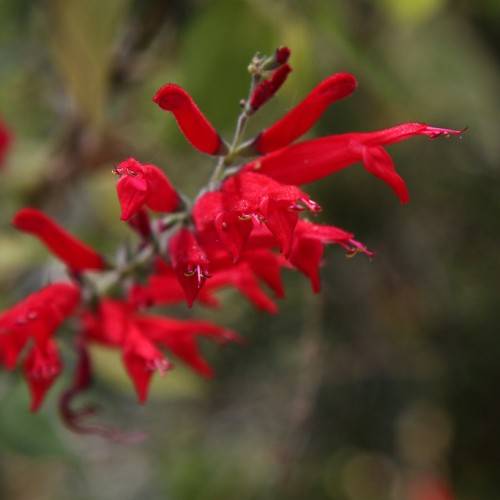
pineapple sage
Salvia elegans
Cycle:
Herbaceous Perennial
Watering:
Frequent
Hardiness Zone:
8 - 10
Flowers:
Flowers In Summer
Sun:
part sun/part shade
Fruits:
Fruits Ready In
Edible:
Yes
Leaf:
Yes
Growth Rate:
Low
Maintenance:
Low
Drought Tolerant:
Yes
Tropical:
Yes
Care Level:
Medium
watering
Pineapple sage (Salvia elegans) prefers consistently moist soil and should be watered regularly. During the growing season, water the plant deeply once or twice per week, or enough to keep the soil consistently moist but not soggy. Make sure to water the soil around the plant, not just the leaves. In the winter months, reduce watering to every 2 to 3 weeks.
sunlight
Pineapple sage (Salvia elegans) generally requires 4-6 hours of full sunlight per day. It does best in a spot that receives direct sun in the morning until mid-afternoon, followed by a bit of light shade during the hottest part of the day. In regions with harsher sunlight, it should be protected with a light shade cloth. Too much sun can scorch its vibrant leaves, so diffused light is generally preferable.
pruning
Pineapple sage (Salvia elegans) should be lightly pruned in late winter or early spring just before it puts out new growth. This will help to keep the plant healthy and promote more vigorous growth. Pruning should involve removing any dead or diseased branches, as well as cutting back any unusually long stems. However, overall the amount of pruning should be kept to a minimum, as this is a relatively hardy plant and can handle some natural weather conditions. Additionally, take care not to prune more than a quarter of the total plant material at once to avoid stressing the plant.
